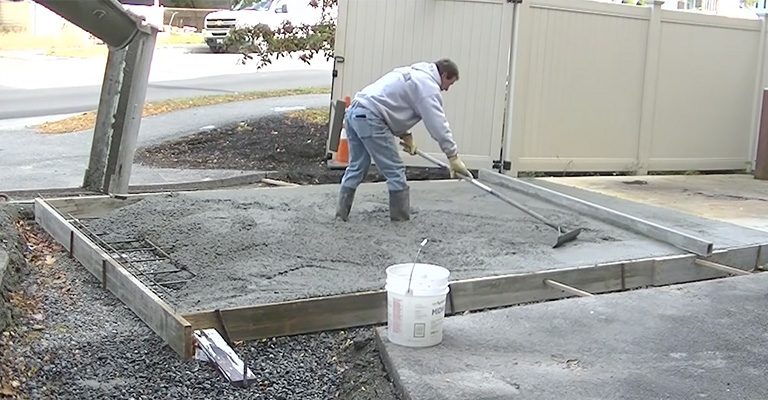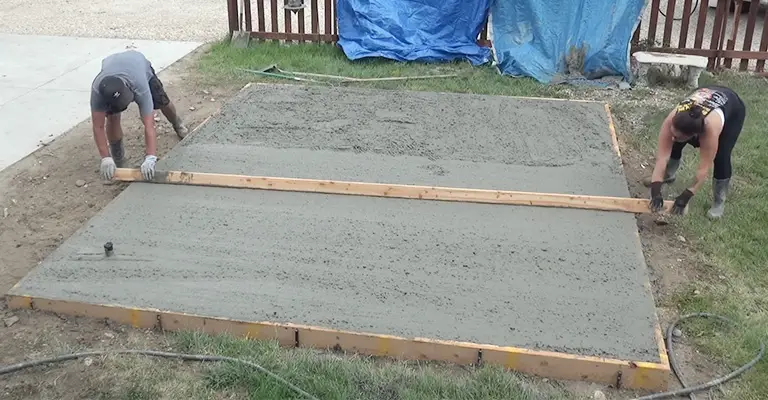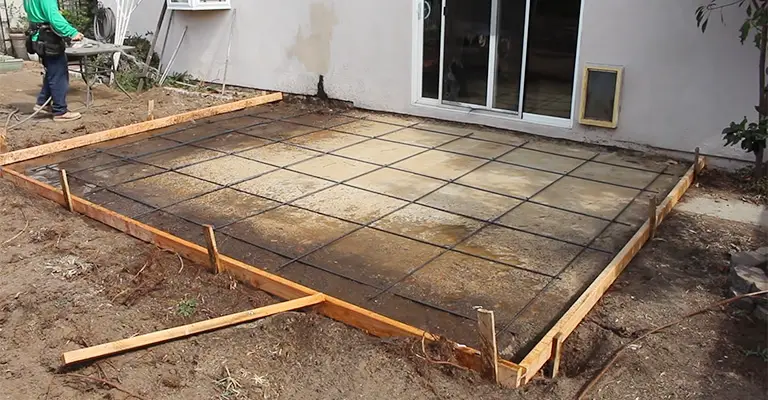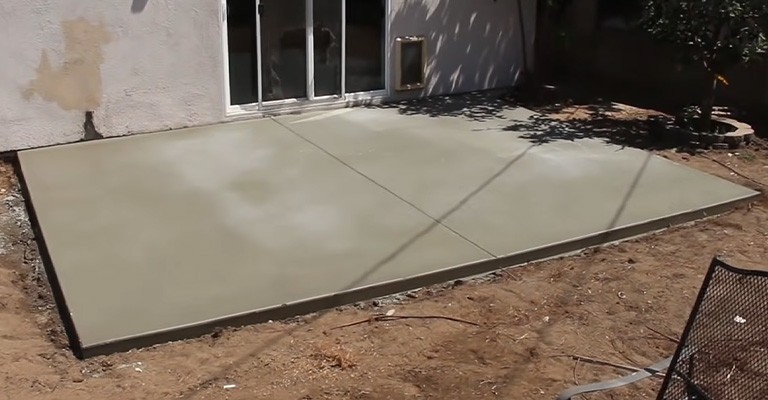Embarking on a home improvement project can be an exciting endeavor, especially when it involves creating a solid foundation for a structure or adding a functional surface to your property.
One such project that may come to mind is pouring a concrete slab. Whether you envision a new patio, driveway, or a platform for a shed or garage, the decision to tackle such a task on your own is a brave one that requires careful consideration.
But just how big of a concrete slab can you pour yourself? It’s a question that often arises when homeowners contemplate the do-it-yourself route.
While the size and complexity of the project will depend on various factors, understanding the practical limitations and potential challenges can help you determine the feasibility of taking on this endeavor without professional assistance.
How Big Of A Concrete Slab Can I Pour Myself?

When it comes to pouring a concrete slab, the thickness plays a crucial role in determining the surface area that can be covered with a given amount of concrete. Here are some general guidelines based on common thicknesses:
- 4 inches (10 centimeters): At a thickness of 4 inches, you can typically pour approximately 80 square feet (7.4 square meters) with one cubic yard (0.76 cubic meters) of concrete. This is a commonly recommended thickness for patios, walkways, and other light-duty applications.
- 6 inches (15 centimeters): If you increase the thickness to 6 inches, the coverage area per cubic yard will decrease. With this thickness, you can expect to pour around 60 square feet (5.6 square meters) per cubic yard. This thickness is often suitable for driveways and other areas that will experience heavier loads.
- 8 inches (20 centimeters): When pouring at an 8-inch thickness, the coverage area per cubic yard further reduces. You can typically pour approximately 40 square feet (3.7 square meters) per cubic yard. This thickness is commonly used for areas that will bear significant weight, such as garage floors or industrial applications.
It’s worth noting that if you pour a slab that is thinner than the recommended thickness, you may be able to stretch the coverage area slightly.
However, doing so carries the risk of increased cracking and upheaval due to insufficient structural integrity. It’s crucial to strike a balance between cost efficiency and ensuring a durable and long-lasting concrete slab.
Before proceeding with any concrete pouring project, it is essential to consult with local building codes and regulations to ensure compliance with specific requirements in your area.
Additionally, seeking guidance from professionals or experienced contractors can provide valuable insights and advice tailored to your unique circumstances.
Remember, while pouring a concrete slab yourself can be rewarding, it’s important to prioritize safety and quality to achieve the best results.
What Is The Maximum Size Of Concrete Slab You Can Pour Yourself?

The size of the concrete slab you can pour should be calculated before you begin.
In addition to your physical strength, accessibility, equipment availability, and cost, the size of the slab will also depend on several factors.
The following factors should be considered if you are planning to pour a large slab.
Calculating the Maximum Size of a Concrete Slab for Homeowners
For homeowners, the maximum size of a concrete slab is approximately 10 feet by 10 feet, according to research from the Portland Cement Association.
A task’s size is determined by the amount of physical strength and labor required to complete it. Furthermore, larger slabs require more reinforcement, which can increase the project’s cost and complexity.
Can You Pour A Concrete Slab Yourself?
Depending on your level of experience and the size of the area you work with, you will find the answer to this question different.
A homeowner usually has no trouble pouring a slab up to 10 feet by 10 feet. A professional contractor may be best suited to help if the area is larger than that.
How to Calculate the Maximum Size of Concrete Slabs for DIYers

You can determine the maximum slab size you can handle if you are considering pouring a concrete slab yourself. To help you get started, here is a step-by-step guide:
Step-by-Step Guide
1. Take measurements of the concrete pouring area. You will be able to determine the size of the slab based on this.
2. You should take into account your physical strength and the weight of the materials you intend to work with. Consider enlisting the help of a friend or relative.
3. Make sure you have the necessary materials and equipment. The right tools will make your job easier.
4. Estimate the project’s cost. By doing this, you will be able to determine the maximum slab size you can afford.
Concrete Pouring Instructions
It is time to start pouring concrete once you have determined the maximum slab size. Follow the manufacturer’s instructions when mixing the concrete.
Using a shovel or trowel, spread the concrete evenly across the area. After smoothing out the slab, use a float to finish it off.
Considerations for Laying Out the Slab

It is important to consider a few things when laying out the slab. Level the area first. Concrete will set properly if this is done.
Furthermore, it is important to consider drainage and the placement of any reinforcement materials. As a result, the slab will be stronger and more durable.
How to Pour a Large Concrete Slab: Factors to Consider
There are several factors to consider before pouring a large concrete slab:
Cost
Cost is an important consideration before beginning a project with large concrete slabs. Material, equipment, and labor costs will need to be considered when determining the total project cost.
Equipment
It is necessary to have the right equipment in order to pour a large slab of concrete. In addition to a concrete mixer and wheelbarrow, shovels, trowels, and other tools, this kit also includes an electric drill.
It may be difficult to complete the task if you do not have access to the necessary equipment.
Accessibility
Considering the accessibility of the area is important when pouring a large slab. The job may be more challenging if it’s difficult to access the area. Depending on the accessibility of the site, the slab size may need to be adjusted.
Physical Strength
It takes a lot of physical strength and stamina to pour a large slab of concrete. You may have difficulty completing the job if you are not physically fit.
Furthermore, it is important to take into account the weight of the materials. It is dangerous to handle concrete incorrectly because it is heavy and can break if handled incorrectly.
Final Words
With the right preparation, pouring a large concrete slab can be a challenging DIY project. Homeowners can determine their maximum slab size by following the steps outlined in this article.
The following factors should be considered: physical strength, accessibility, availability of equipment, and cost. It is possible for homeowners to pour a large concrete slab successfully with careful planning and the right tools.
These steps will help homeowners determine how large a slab they can handle and successfully complete their project.







